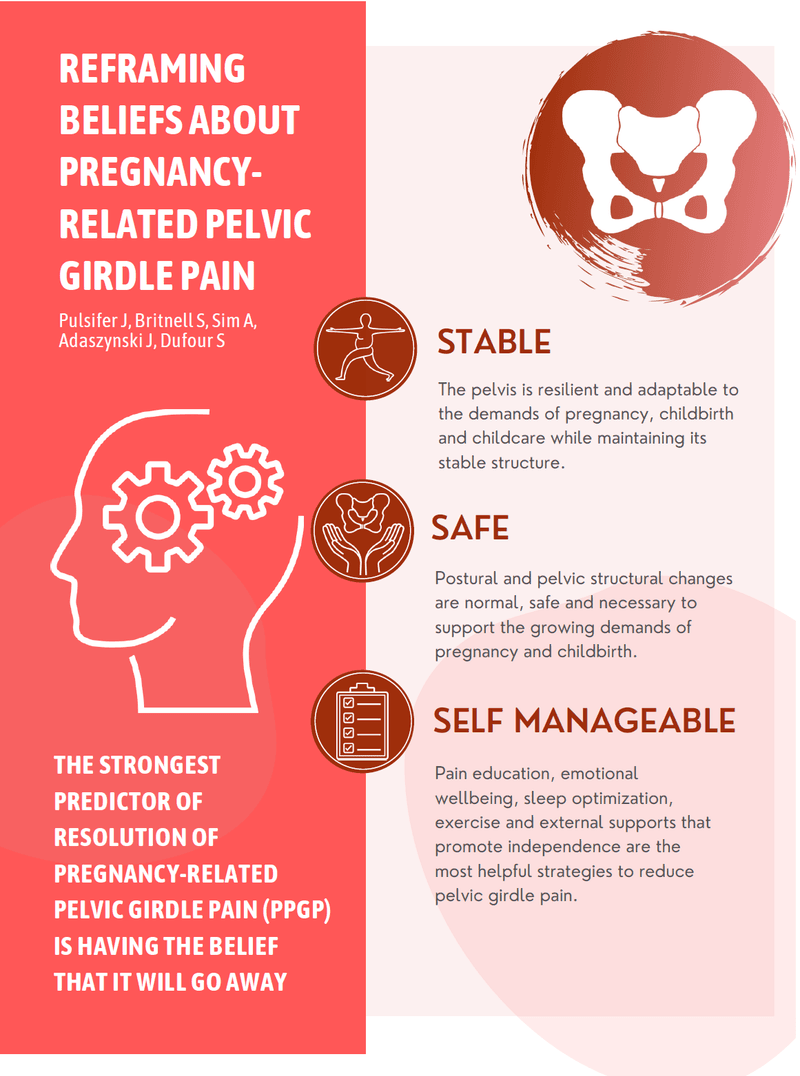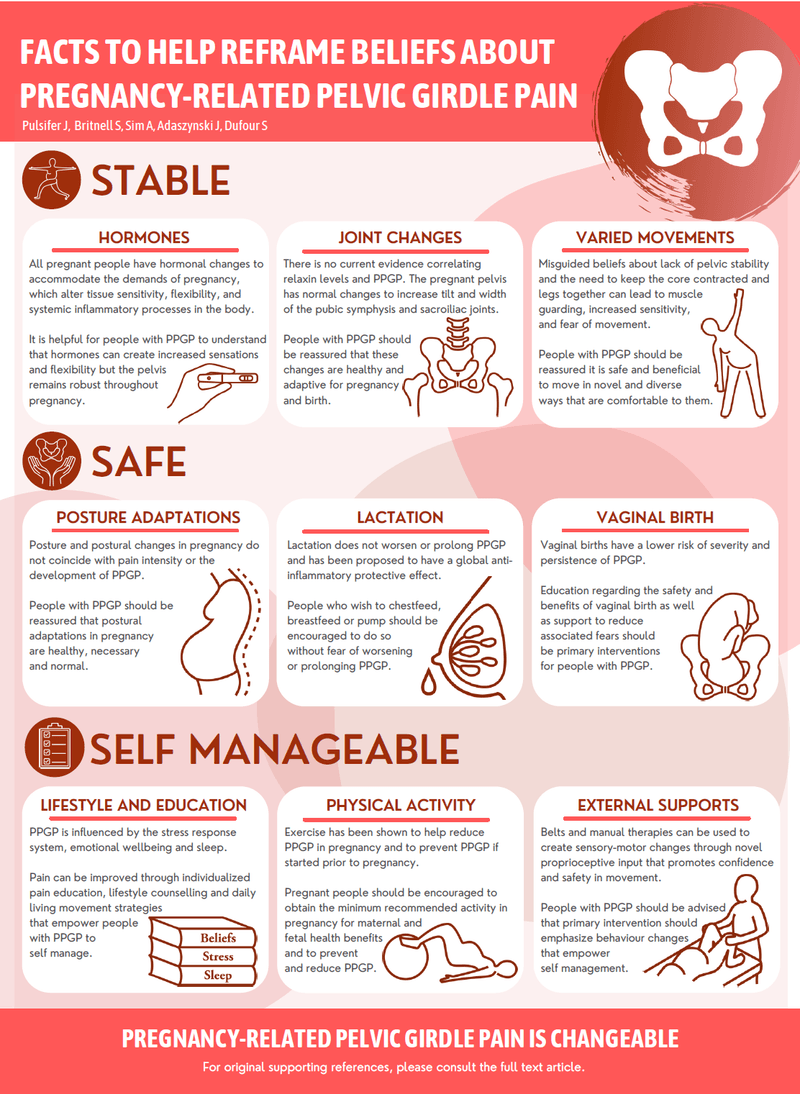When it comes to pregnancy-related PGP the long-standing familiar narrative is reflected in this case study. The problem is that this narrative is outdated, untrue and actually harmful.
We all need to do better evolve our narrative a reframe our understanding of pregnancy-related PGP. It is a pain experience that has nothing to do with relaxing, pelvic mechanics or even the pregnancy itself. It has everything to do with the context of the pregnancy, factors of which for some people are making their systems more protective and sensitive (fear, worry, and previous births trauma are some of the key culprits of a protective system).
Despite mounting evidence of the role that psychosocial and physiological factors play, PGP continues to be mainly understood and treated as a purely biomechanical issue. However, congruent with broader literature examining lumbopelvic pain more globally, PPGP must be understood along with the evolution of contemporary pain science regarding the multifaceted nature of pain and the context of each pregnant person’s unique lived experience
The factors at play for each person are a bit different so working with a pelvic health physiotherapist who has training in pain science can be very helpful.


PDF Available for download in multiple languages
The key aspects of our reframed approach to pregnancy-related PGP are explained in the infographic below and to learn more about this topic you can tune into the podcast below.
Women deserve updated evidenced-based care – if you are someone who needs help navigating pain you are experiencing in pregnancy or post-partum, you can do a virtual consult with me.
If you are a health care provider who needs a tune up in your clinical skills on the topic of pregnancy- related PGP, come learn with me.
Use code PGP25 to get 25% off my course: Reframe Pelvic Girdle Pain: A 21st Century Approach.



